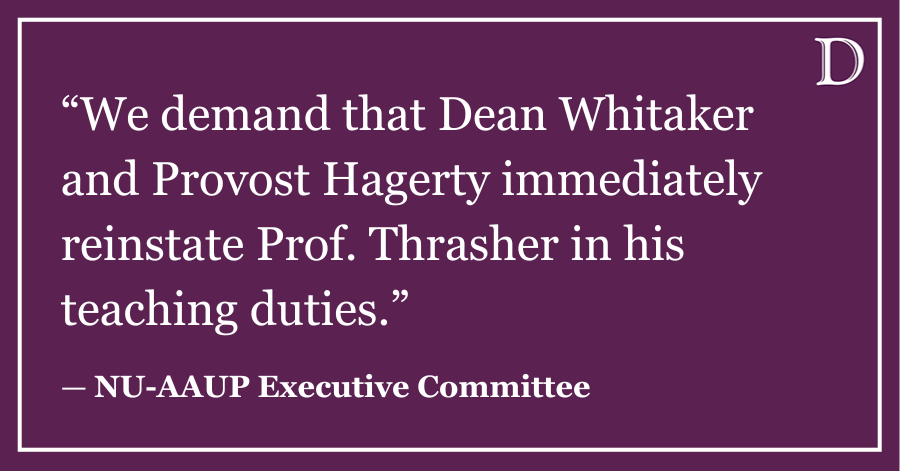It has been impossible the past few weeks not to notice the “And I am Greek” posters displayed across campus debunking typical stereotypes about fraternities and sororities. In reality, they could be used to contrast almost any stereotype. Well, I am moderately conservative and still support affirmative action. Go ahead: make that into a campaign poster. However, my view differs from most notions of fairness or justice that typically accompany support for affirmative action. Instead, I believe that affirmative action by public universities and the support they receive from their private counterparts is an extension of sensible public policy. While affirmative action in higher education is just one link in the chain of improving the economic position of historically disadvantaged groups, it is a crucial link between academia and industry. Northwestern is absolutely correct in supporting the University of Texas’ defense of affirmative action in front of the Supreme Court.
At its very core, affirmative action in higher education is about improving diversity, not just racially but also between income levels, sexuality and creed. Students are wrong to claim that they are more deserving than their peers of acceptance to their school of choice simply because they have a higher GPA or perform at a higher level on traditional measurements of intelligence. Learning, and by extension performance, is also influenced by your peers’ immeasurable qualities, such as life experiences and extracurricular interests.
These trends go far beyond the classroom. McKinsey & Company, a consulting firm, released a report in April showing that companies with executive boards that scored in the top quartile in terms of diversity measures had a 53 percent higher return on equity than those that scored in the bottom quartile. J.P. Morgan Chase’s investment banking unit, not typically viewed as a bastion of diversity, is actively recruiting LGBT students.
Companies are increasingly serious about diversity not necessarily because they have a strong moral compass but because the returns to having an atmosphere that openly encourages intellectual discourse result in higher productivity. While detractors might claim that affirmative action unnecessarily focuses on racial divisions, race is nevertheless an important component of diversity. Scrapping affirmative action entirely could erode important gains made by minorities in terms of employment and larger acceptance in society. Even if the only result to date of affirmative action was an improvement in social consciousness (and it is not), the policy would still have been worthwhile.
Admittedly, income and wealth gaps between racial groups in the United States are still very high. This is not an indicator that affirmative action is a failed policy but that the underlying forces driving inequality are powerful and complex. For instance, whites, who have historically been able to build up wealth and skills at a higher rate than blacks and Hispanics, have been better able to take advantage of the opportunities afforded by a global economic environment.
Moreover, economic convergence is not a phenomenon that occurs over short time scales. Take for example the incredibly high per capita disparity in income and wealth between the developed and third worlds, which flies in the face of the incredible gains that developing countries have made over several decades. Finally, and most pertinently, complimentary government policies have not been so well designed. Primary and secondary education, the pillar to helping disadvantaged groups, is as dismal as ever, while the weak community college and vocational training system means that fewer opportunities exist for those at the bottom to start climbing the economic ladder. Nevertheless, affirmative action remains an appropriate higher education policy. The key to maximizing its potential, however, rests in improving other policies meant to target income disparities.
To be sure, we’ve come a long way since President Kennedy signed Executive Order 10925, requiring government employers to not discriminate based on race, gender or creed. Its signing was a watershed event that showed America was serious about closing opportunity gaps between the privileged and the less fortunate. Later, in writing the majority opinion of Grutter v. Bollinger, the case that upheld affirmative action as a practice, Justice Sandra Day O’Connor opined that racial diversity was in fact a compelling issue. While her voice may no longer resonate from the bench of the land’s highest court, today’s court would do well to uphold affirmative action. In an increasingly globalized era fraught with security and economic concerns, diversity is more important than ever to developing the attitudes and skills of tomorrow’s leaders.
This column was published as part of a point-counterpart series. Read Sydney Zink’s column, “Affirmative action dangerously shortsighted.”
Jan Jaro is a McCormick sophomore. He can be reached at janjaro2015@u.northwestern.edu. If you would like to respond publicly to this column, email a Letter to the Editor to forum@dailynorthwestern.com.












